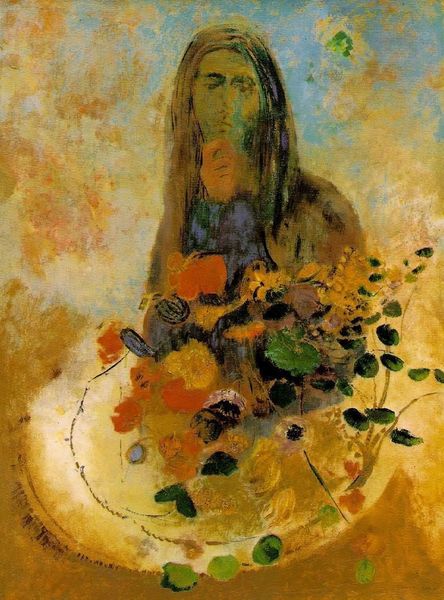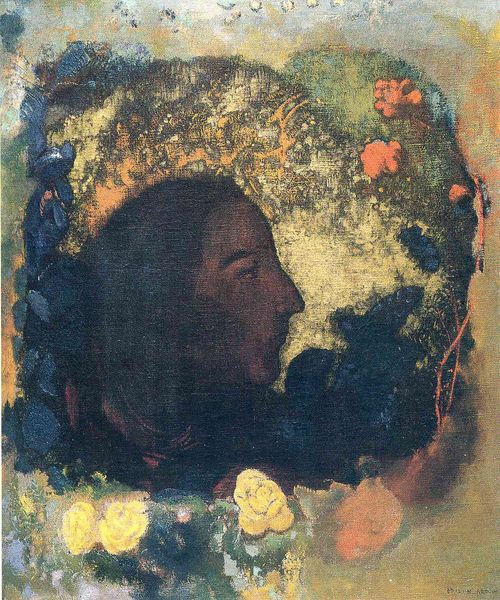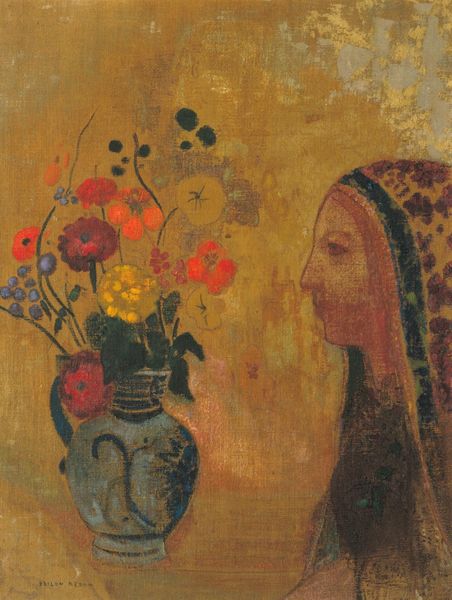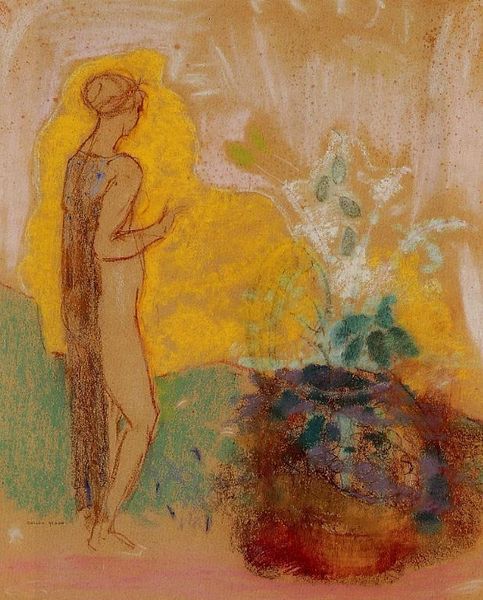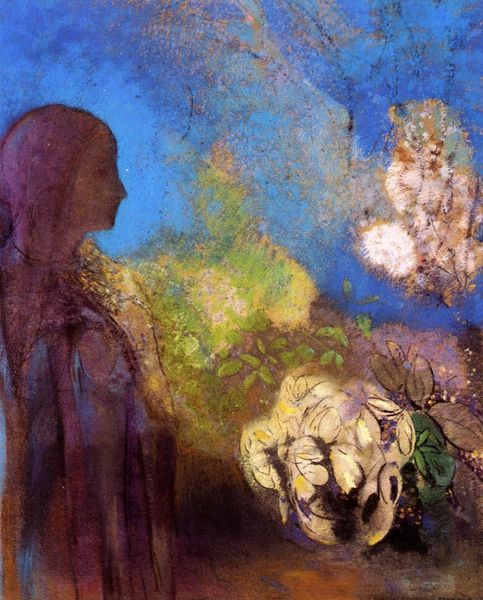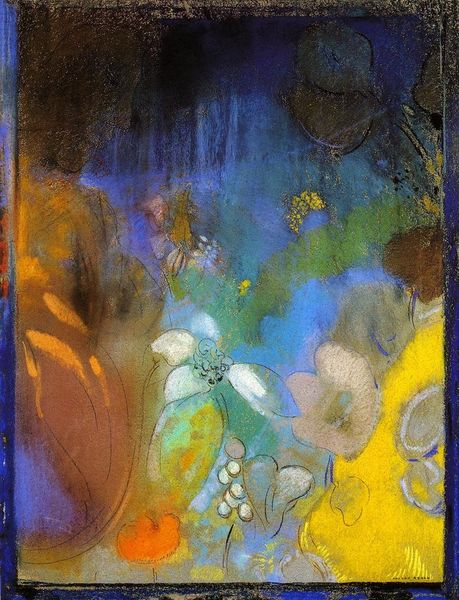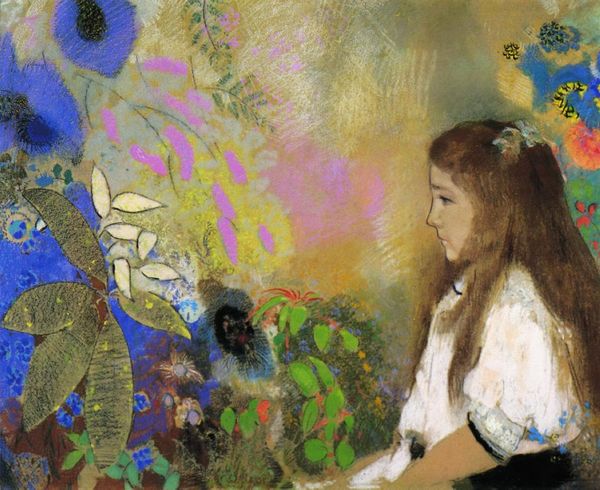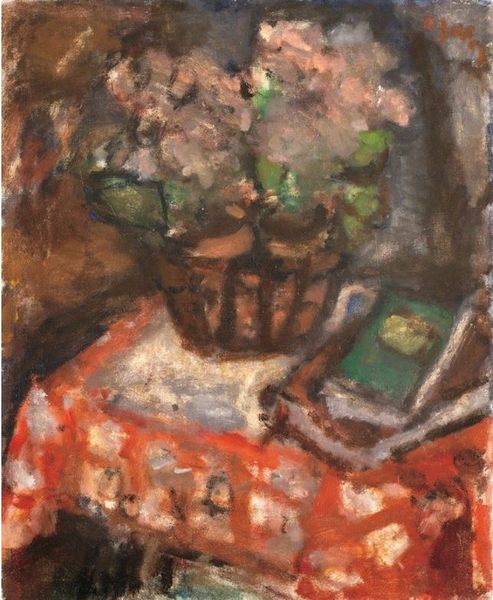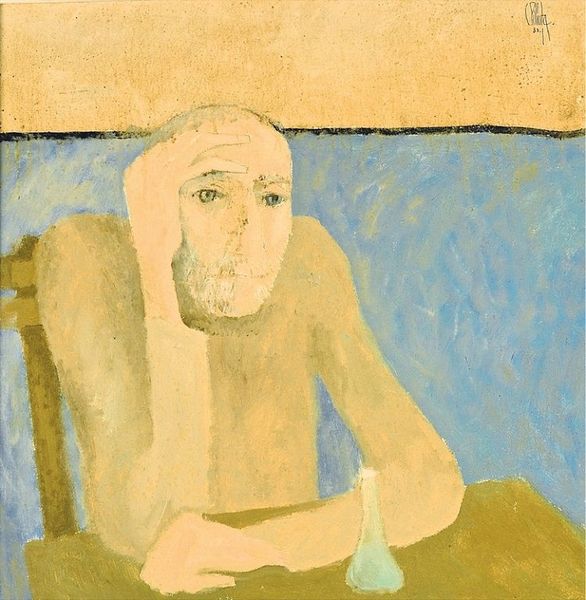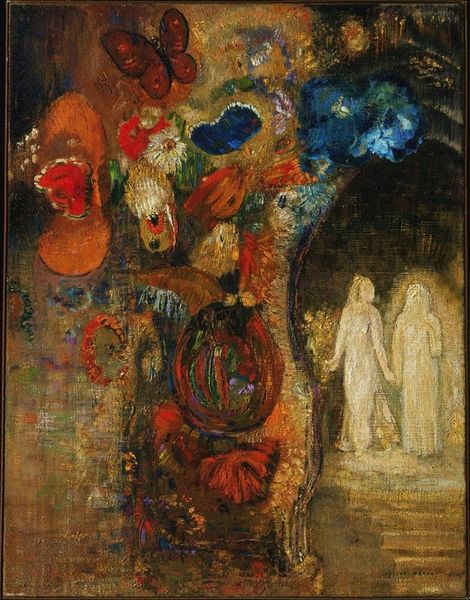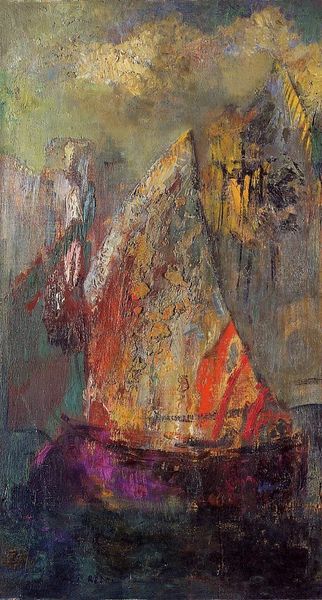
painting, gouache
#
portrait
#
gouache
#
painting
#
gouache
#
landscape
#
figuration
#
symbolism
Copyright: Public Domain: Artvee
Curator: Odilon Redon's "Evocation of Roussel," likely painted around 1912, is rendered in gouache. The imagery is, to say the least, striking. Editor: It is indeed. My immediate response is one of gentle melancholia, softened by the presence of blooms scattered around what seems to be a portrait. The brushwork is wonderfully ethereal. Curator: Observe the composition. Redon positions the figure centrally, almost dissolving into a chromatic cloud. The portrait itself possesses an intriguing duality—at once solid and ephemeral. We should consider how the color field interacts with and essentially destabilizes the clear demarcation of the human subject. Editor: It’s the materiality of gouache here that draws my eye; Redon's handling yields this sense of lightness, a certain dissolving. And I find myself considering the craft and process required to achieve such a delicate appearance with paint on what is likely canvas. This deliberate application contrasts with traditional painting practices, challenging the art/craft divide, particularly where symbolism’s values reside in rendering meaning through material exploration. Curator: Note how Redon employs color; it is not mimetic. Those ochre, sienna, and pale blues contribute to a dreamlike state. Considering Redon’s symbolist context, the selection is hardly random. They construct a visual language. The orange blooms are especially powerful set against that soft ground. Editor: Agreed, these specific choices—of ground and flower color, are interesting as we begin to recognize an interplay between natural and constructed realms, even to an almost allegorical approach given his subject matter. How might such choices have broadened his audiences? This brings focus to the socio-economic factors dictating who can produce, own, or have access to such labor and its associated consumption habits. Curator: A poignant consideration. It prompts further consideration on the relation between production and aesthetics within the symbolist tradition. Editor: Precisely. Thank you. I have come away from this experience now understanding a fresh layer on the ways we regard Redon, materiality and portraiture within a symbolic lens.
Comments
No comments
Be the first to comment and join the conversation on the ultimate creative platform.
